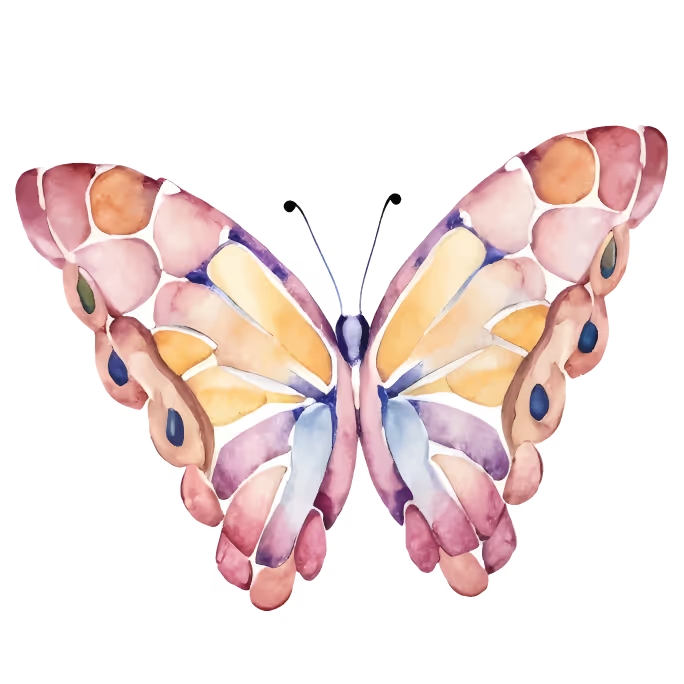Headphones for Autism
Exploring Audio Solutions for Auditory Sensitivities
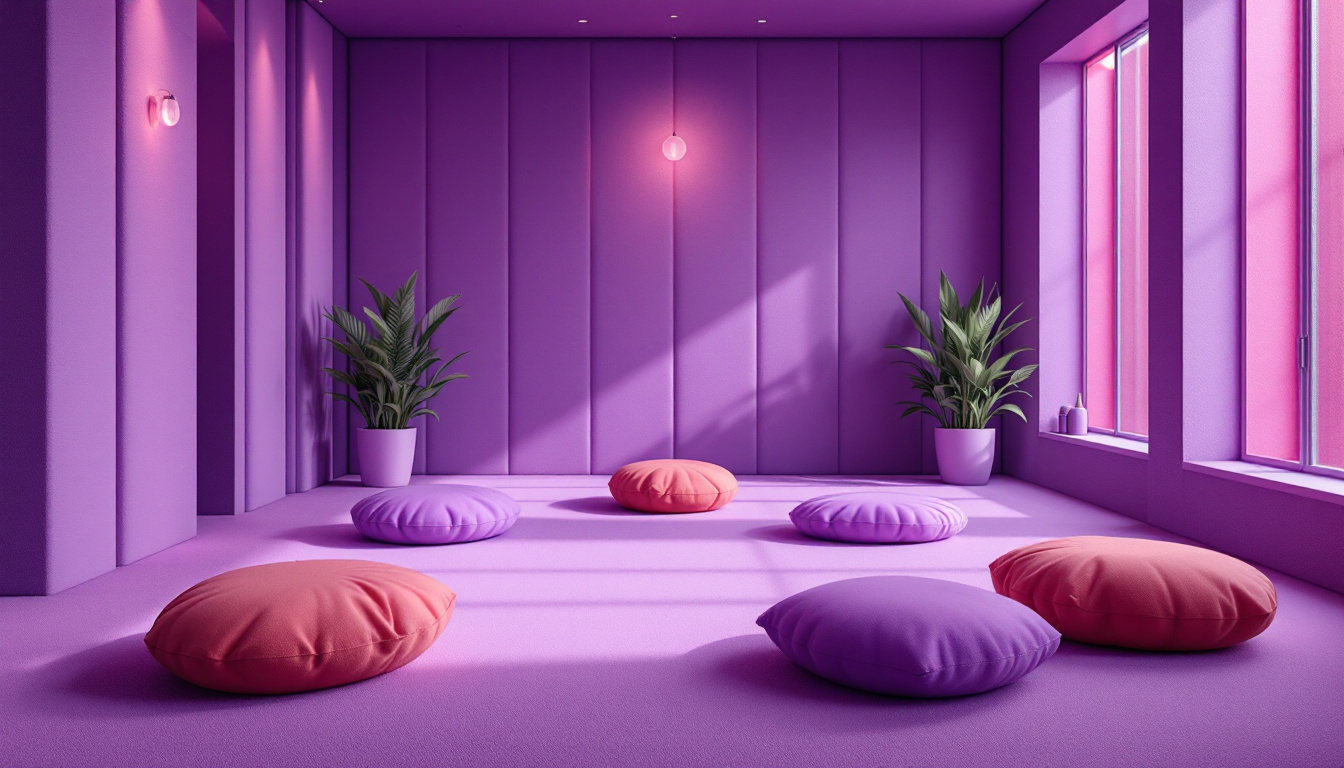
Understanding Noise-Canceling Headphones for Autism
For individuals with autism, managing sensory overload is a significant challenge, especially in environments where noise levels can be unpredictable and overwhelming. Noise-canceling headphones have emerged as a crucial aid for those with sensory sensitivities, offering a controlled auditory space that can make social interactions and daily activities more manageable. This guide explores various aspects of headphones designed for autistic individuals, highlighting personal experiences, product benefits, and features that contribute to their effectiveness.
The Role of Sound Sensitivity in Autism
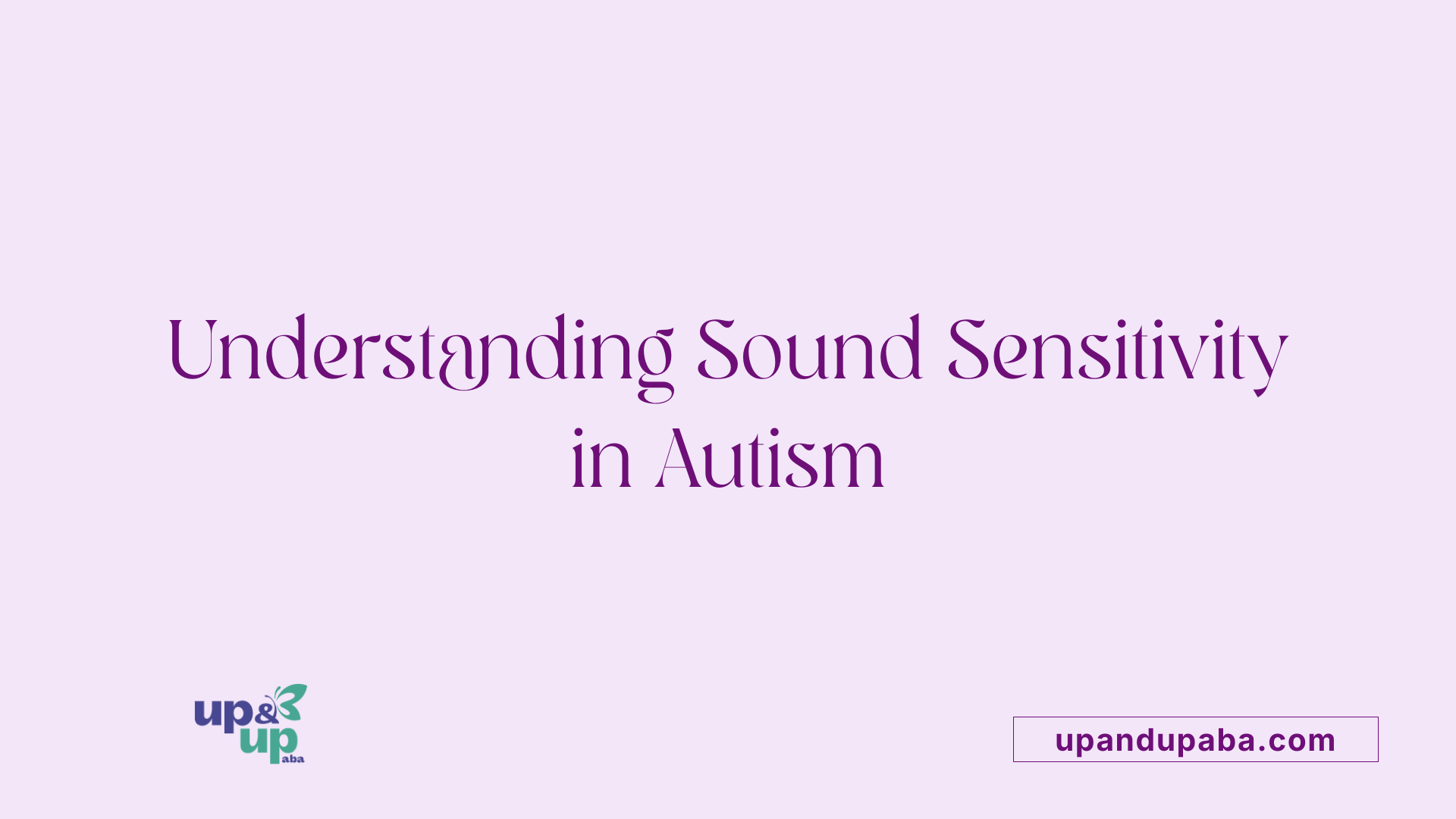
Sound sensitivity in autistic individuals
Sound sensitivity is a prominent challenge for many individuals with autism spectrum disorder (ASD), affecting their daily experiences. Studies indicate that up to 90% of those with ASD exhibit unusual responses to sensory stimuli, particularly in noisy environments. This heightened sensitivity can lead to distress, making tasks like concentration, relaxation, and social interactions significantly more challenging.
To mitigate these effects, noise-canceling headphones have gained popularity among families seeking relief for their children. These devices can provide a sanctuary from overwhelming auditory stimuli, allowing autistic individuals to feel more comfortable in public places or at home.
Impact of auditory stimuli
The impact of auditory stimuli on children with autism is profound. Many individuals benefit from the use of noise-canceling headphones that help improve focus, reduce environmental stress, and enhance overall well-being. Such headphones come in two types: active noise canceling (ANC), which uses technology to counteract external sounds, and passive noise isolation (PNI), which relies on physical barriers to block noise. Each type serves its purpose, with ANC often preferred in louder environments.
Ultimately, the right noise-canceling headphones can transform the lives of children with autism. Parents have reported significant improvements in their children’s ability to engage with others and handle daily tasks after incorporating high-quality headphones into their routines. Top models like the Sony WH1000-XM3 and Bose QuietComfort 35 II are frequently recommended due to their combination of comfort and sound-trapping effectiveness.
What are Sensory Headphones for Autistic Individuals?
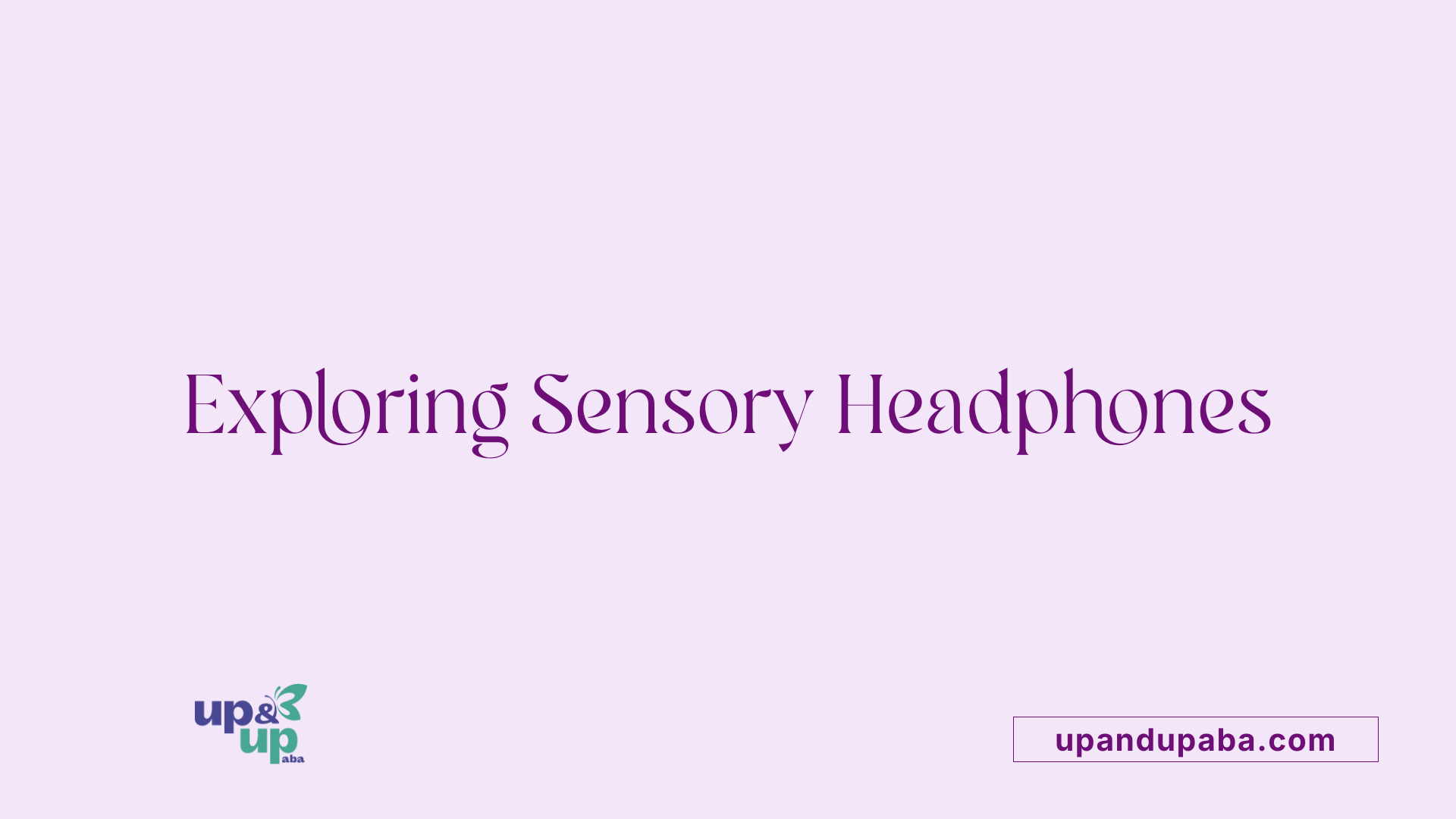
What are sensory headphones for autistic individuals?
Sensory headphones are specialized audio devices tailored for the unique auditory needs of autistic individuals and those with sensory sensitivities. These headphones typically integrate noise-canceling technology or sound filtering to diminish overwhelming background noise, fostering a more controlled auditory environment.
Many models offer gentle compression around the ears, which can have a soothing effect during episodes of sensory overload. They often come equipped with volume-limiting functions to safeguard sensitive hearing, ensuring comfort for the user.
By creating a more pleasant auditory experience, sensory headphones assist autistic individuals in feeling more at ease in various settings, whether at home, school, or in bustling public spaces. This enhanced comfort can lead to improved social interactions and a better quality of life, especially for those who experience high levels of noise sensitivity.
Benefits and features
Sensory headphones come with numerous benefits designed specifically for individuals on the autism spectrum:
- Noise Reduction: Both active noise canceling (ANC) and passive noise isolation help block unwanted sounds, making them ideal for noisy environments.
- Comfort: Features like padded ear cups and adjustable bands ensure a snug fit without discomfort during long use.
- Durability: These headphones are built to withstand the regular use that comes with an active lifestyle.
- Ease of Use: Simple controls allow users to adjust settings quickly without hassle, catering to the needs of users who may require assistance.
Recommended Models
Some of the top recommended headphones include:
| Model | Type | Features |
|---|---|---|
| Sony WH1000XM3 | Active Noise Canceling | Exceptional noise cancellation, comfort |
| Bose QuietComfort 35 II | Active Noise Canceling | Renowned for sound quality and durability |
| Earmuff Style Defenders | Passive Noise Isolation | Great for younger children in social settings |
Investing in quality sensory headphones can significantly benefit children with autism, making challenging environments more manageable.
Types of Noise-Canceling Technology
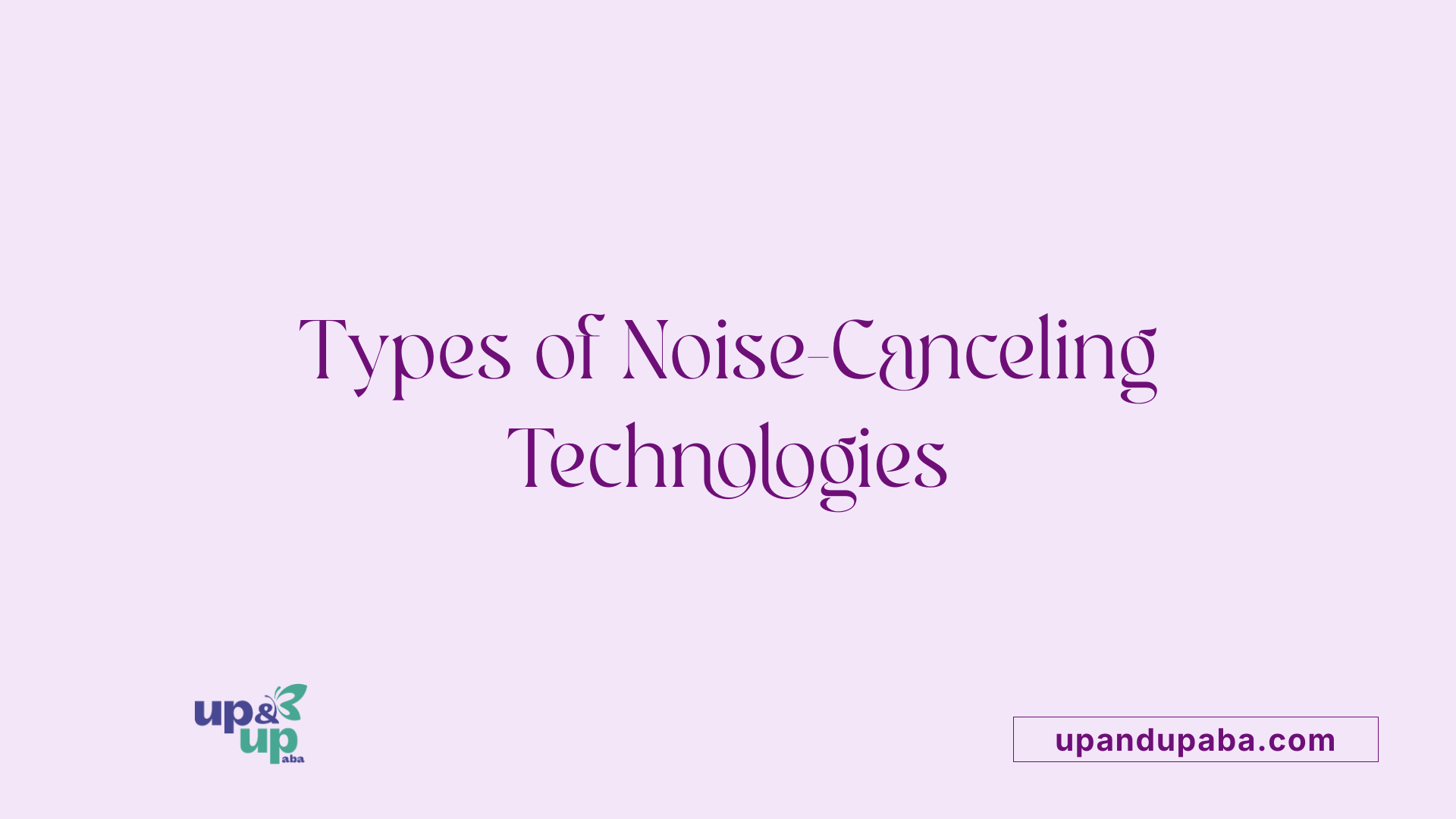
Active Noise Cancellation (ANC)
Active Noise Cancellation (ANC) technology is ideal for children with autism who are particularly sensitive to auditory stimuli. ANC headphones use built-in microphones to detect external sounds and then produce opposing sound waves to cancel them out. This method is especially effective in environments filled with consistent background noise, like airplanes or crowded public spaces, providing a calmer auditory experience.
Passive Noise Isolation (PNI)
On the other hand, Passive Noise Isolation (PNI) employs a different approach. This technology physically blocks out sound through cushioned ear cups or by fitting snugly in the ears. While this technique is simpler, it can be very effective in reducing noise levels, particularly in quieter settings. PNI can also serve as an affordable alternative, although it may not offer the same degree of sound blocking as ANC in noisier environments.
Differences and Benefits
When choosing the right headphones for a child with autism, it’s essential to consider both ANC and PNI options. Here are some differences and benefits to help make an informed decision:
| Feature | Active Noise Cancellation (ANC) | Passive Noise Isolation (PNI) |
|---|---|---|
| Noise-Blocking Efficacy | Highly effective in loud environments | Good for quiet environments |
| Comfort | Often includes plush padding for comfort | Fit can vary, may be more bulky |
| Price Range | Generally higher due to technology | Usually more affordable |
| Suitable Environments | Ideal for travel and public places | Suitable for home use and low noise |
In summary, parents should consider their child’s specific sensory needs when selecting between Active Noise Cancellation and Passive Noise Isolation. The right choice can greatly enhance a child's comfort and ability to focus in different auditory environments.
Understanding PNI Headphones for Autism
What are PNI headphones and how do they benefit autistic individuals?
PNI (Passive Noise Isolation) headphones play a crucial role in supporting autistic individuals by providing a physical barrier against distracting sounds. Unlike active noise-canceling (ANC) headphones, which create opposing sound waves to neutralize noise, PNI headphones function by physically blocking sound waves from entering the ear. This design is particularly beneficial for children with autism, who often face challenges when exposed to overwhelming sensory stimuli. Up to 90% of individuals with autism spectrum disorder (ASD) have atypical responses to sensory input, making it essential for them to have effective options for managing noise sensitivity.
Many children with autism benefit from PNI headphones as they create a quieter environment, which can foster better sleep patterns and lower anxiety levels. With less distraction from environmental noise, they can focus on tasks more effectively, whether in a busy classroom or during calm activities at home. The snug fit of PNI headphones allows for a more enjoyable listening experience, enabling autistic individuals to engage with music or audiobooks without the excessive volume often needed to drown out background noise.
Moreover, PNI headphones can offer a respite from sensory overload, creating a personal oasis in chaotic environments. However, it's essential to recognize that while these headphones provide significant noise reduction, they may also limit the ability to hear important outside sounds, like instructions or conversations. Therefore, when selecting the right headphones, it’s crucial to balance the need for noise isolation with the necessity of remaining aware of one’s surroundings.
How PNI aids autistic individuals
Choosing headphones that cater specifically to the needs of children with autism involves several considerations:
- Comfort: Padding and adjustable fit help to ensure prolonged use without discomfort.
- Effectiveness: Strong noise-blocking capabilities are paramount to shield from overwhelming sounds.
- Volume Limiting: Protecting hearing is vital, especially for those sensitive to loud noises.
- Durability: Robust construction can withstand regular use, which is essential for active individuals.
- Ease of Use: Headphones that allow for easy adjustment foster greater independence.
Several models stand out for their incorporation of PNI technology. Parents often share positive experiences with brands like the Sony WH1000-XM3, renowned for their comfort and noise isolation. Ultimately, selecting the right PNI headphones significantly enhances the quality of life for children on the autism spectrum, helping them to navigate their world with greater ease.
The Impact of Headphones on Managing Sensory Sensitivities
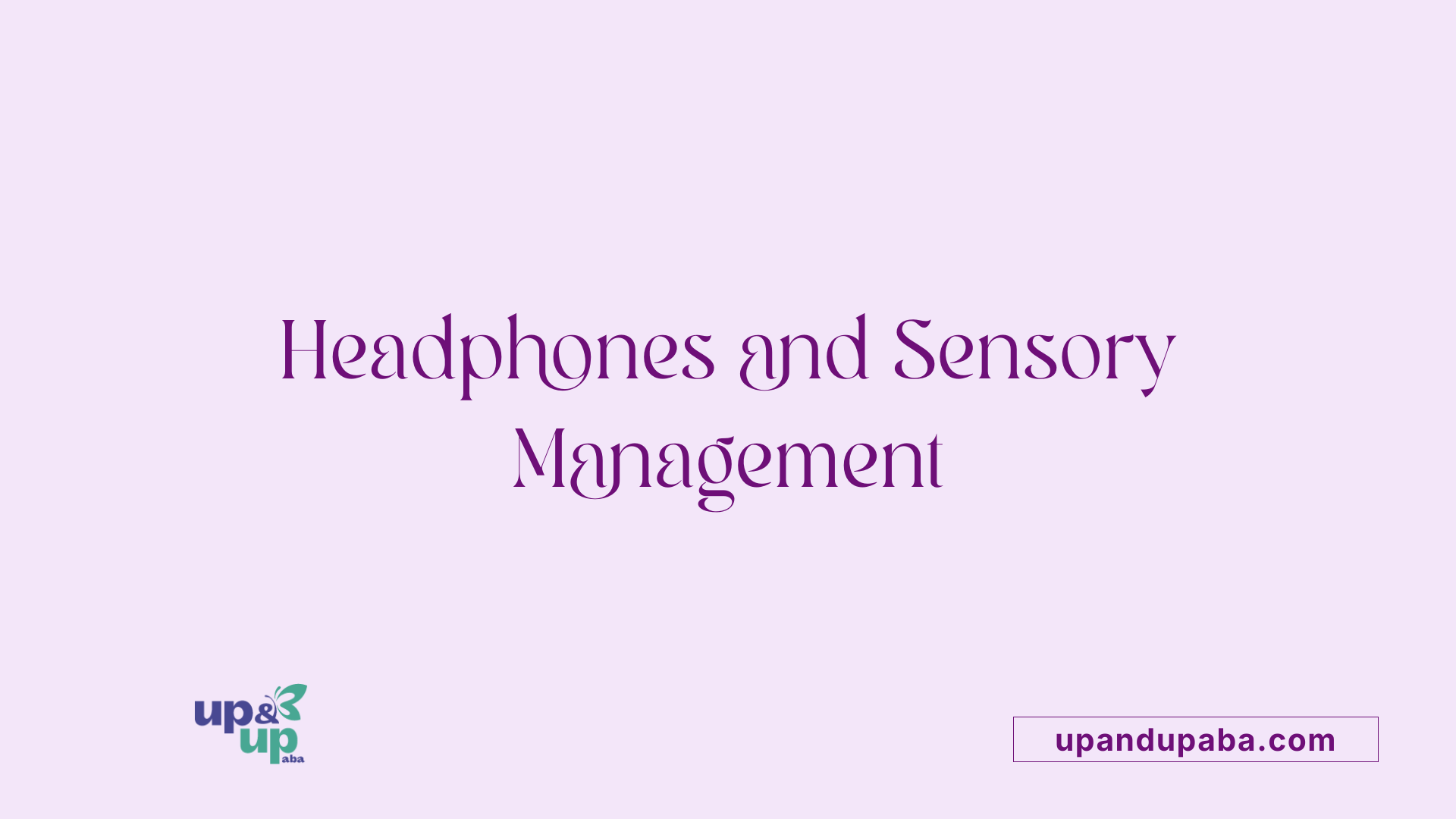
Headphones as a coping mechanism
Wearing headphones can be a significant aid for children with autism in managing sensory overload. Up to 90% of individuals on the autism spectrum experience unusual responses to sensory stimuli, making environments, especially noisy ones, overwhelming. Using headphones—especially noise-canceling models—allows these individuals to filter out distressing sounds, making it easier to navigate different settings.
Active noise canceling (ANC) headphones work by using microphones to detect ambient noise and generate opposing sound waves, effectively neutralizing unwanted sounds. This technology proves particularly beneficial in busy environments, helping autistic individuals maintain their calm and focus. On the other hand, passive noise isolation methods, such as snug-fitting ear cups or earplugs, can also help, although they typically offer less noise reduction compared to ANC.
Improving comfort and focus
The comfort of headphones is crucial for those with autism. Parents frequently emphasize investing in high-quality headphones after observing the difference it makes in their children’s ease with noise. Features like strong noise-blocking capabilities, volume limiting for hearing protection, and adjustable padding enhance usability, keeping the children comfortable during prolonged wear.
Individuals have varied preferences regarding headphone types; some may choose large over-ear designs for maximum comfort, while others prefer discreet earplugs for subtlety. Notably, recommendations abound for specific models, such as the Sony WH1000XM3 and Bose QuietComfort 35 II, both recognized for their exceptional sound quality and user comfort.
In summary, using headphones offers a vital coping mechanism for autistic individuals, reducing sensory overload and fostering more positive social interactions. By helping both children and adults feel more at ease in challenging environments, these devices contribute to a notable improvement in their overall quality of life.
Choosing the Right Headphones for Autistic Children
Key considerations
When selecting headphones for children with autism, it's essential to consider several factors to ensure the best fit for their specific needs. Here are some important aspects to keep in mind:
Noise-Blocking Capabilities: Look for headphones that effectively reduce background noise. Active noise canceling (ANC) technology uses microphones to pick up and neutralize unwanted sounds. Meanwhile, passive noise isolation relies on a snug fit to physically block noise. Both methods can greatly enhance comfort in challenging auditory environments.
Volume Limiting Functions: Protecting a child's hearing should be a priority. Headphones with built-in volume limiters help prevent damage to sensitive ears while ensuring they can still enjoy their music or audio content.
Comfort: Consider features such as padded ear cups and adjustable bands for a comfortable fit. Since children may wear headphones for extended periods, prioritize models designed for prolonged wear.
Durability: Children can be rough on their possessions. Choosing headphones made from durable materials can ensure they withstand everyday use.
Ease of Use: Headphones should be user-friendly. Look for options that allow for easy adjustment of settings, so children can manage their listening experience without frustration.
Comfort and durability
Comfort is critical when selecting headphones for autistic children, as poorly fitting headphones can lead to distractions or discomfort. In this regard, over-ear designs generally offer more comfort due to their larger ear cups, while in-ear options may provide a more discreet alternative but can be less comfortable for prolonged use.
Moreover, durability is equally vital. Many parents have shared experiences about opting for higher-quality headphones after initial trials with cheaper options. Good quality often translates to better comfort and improved focus, ultimately making it a valuable investment.
Top Recommended Models
Some notable recommendations for noise-canceling headphones include the Sony WH1000XM3 and Bose QuietComfort 35 II, both praised for their superior sound quality, comfort, and effective noise cancellation suitable for users on the autism spectrum.
Personal Experiences: Beyond Product Specifications
User Testimonials
Parents and caregivers often share how noise-canceling headphones greatly improve the quality of life for children with autism. One parent noted a significant shift in their daughter's behavior after switching from cheaper models to high-quality headphones. They observed that enhanced comfort and effective noise cancellation led to increased calmness in overwhelming environments. Such testimonials reinforce the idea that investing in the right headphones can yield substantial benefits for autistic individuals.
Adaptability of Headphones to Individual Needs
Choosing the right headphones isn't a one-size-fits-all solution. Many users emphasize the importance of trying out different styles and brands to find the best fit for each individual. In online forums, shared experiences reveal a split preference; some children thrive with over-ear designs, offering superior comfort and sound quality, while others prefer more discreet options like earplugs. This diversity in needs highlights the necessity for adaptability—not every child will respond the same way to a single type of headphone.
Ultimately, the journey to finding suitable noise-canceling headphones can be quite personalized, varying from one user to another. Ensuring that children with autism experience less sensory overload requires careful consideration of individual comfort and effectiveness in reducing noise, leading to enhanced focus and social interaction.
Recommended Headphones for Managing Sensory Issues
What headphones are recommended for managing sensory issues?
When it comes to managing sensory issues for children and adults on the autism spectrum, specific models of headphones stand out for their effectiveness and comfort. Here are some highly recommended options:
| Model | Type | Highlights |
|---|---|---|
| Dr. meter Ear Muffs | Passive Noise Reduction | Excellent noise reduction capabilities, eco-friendly design, suitable for all ages. |
| Bose Noise Cancelling Headphones | Active Noise Cancelling | Advanced noise cancellation tech and comfortable fit for extended wear. |
| Tanoshi Kids Headphones | Volume Limiting, On-ear | Budget-friendly with volume limiting features ensuring safe listening levels. |
| Puro Sound Labs BT2200 | Wireless, Volume Limiting | Specifically designed for kids with durability and safety in sound levels. |
| Sony WH-1000XM4 | Active Noise Cancelling | Personalized noise cancellation and superior sound quality for immersive experiences. |
Features and customer reviews
When selecting headphones for individuals with autism, several features are particularly valued:
- Noise-Blocking Capabilities: Strong sound damping through either active or passive technologies.
- Volume Limiting Functions: Protects hearing by keeping sound levels safe, especially important for children.
- Comfort: Padded ear cups and adjustable bands to allow for extended use without discomfort.
- Durability: Robust construction to withstand regular usage.
- Ease of Access: Intuitive controls for adjusting settings efficiently.
Customer reviews often highlight how these headphones have made a real difference. Many parents report improvements in their children's ability to cope with noise in various environments, from busy classrooms to crowded public spaces. Options like the Sony WH-1000XM4 and Bose models have received high praise for creating quiet spaces that allow for concentration and relaxation, making them worthwhile investments for families seeking relief for sensory sensitivities.
Pros and Cons of Over-Ear vs. In-Ear Headphones
Comparison
Selecting the right type of headphones for children with autism involves weighing the advantages and disadvantages of over-ear and in-ear styles. Over-ear headphones, such as the Sony WH1000XM3, are often preferred for their superior comfort and ability to create a strong noise barrier. They envelop the ear, providing passive noise isolation in addition to any active noise cancellation technology they might have. This design makes them effective in loud environments, giving users a more immersive sound experience while reducing external noise significantly.
Conversely, in-ear headphones are more discreet and portable, which can appeal to older children or adults. They can be easier to wear in certain situations, such as while walking or in transit. However, they may not offer the same level of sound cancellation as over-ear options, leading to potential challenges in noisy settings.
Impact on Sensory Sensitivity
The choice between over-ear and in-ear headphones can considerably affect how children with autism respond to sensory stimuli. For those with heightened sensitivity to sound, over-ear headphones tend to provide better overall noise reduction, thereby facilitating an environment conducive to focus and relaxation. On the other hand, some individuals may find in-ear designs more comfortable for longer periods, especially in scenarios demanding lower profiles, like classrooms.
Ultimately, the best choice varies from person to person, underscoring the importance of trying both types to determine what works best for each individual's sensory needs.
The Effectiveness of ANC Technology for Autism
Role of ANC in Reducing Distractions
Active Noise Cancellation (ANC) technology is particularly advantageous for children and adults with autism who are sensitive to noise. This sophisticated technology uses microphones to pick up unwanted sounds and generates opposing sound waves to neutralize these auditory distractions. By creating a sonic environment where background noise is significantly reduced, ANC headphones allow autistic individuals to focus better on tasks or simply enjoy a quieter space. For children experiencing sensory overload, this can translate into improved comfort, increased relaxation, and enhanced ability to socialize in noisy environments.
Comparison with Other Technologies
When considering noise-canceling headphones, it’s crucial to compare ANC with passive noise isolation methods. Passive noise isolation relies on physical barriers, such as the snug fit of ear cups or earplugs, to block out sound. These options can certainly be effective, but often fall short in environments with significant noise, such as busy classrooms or public places. For individuals with autism, a combination of both technologies can provide the best results. Many parents and users report that ANC headphones, such as the Sony WH1000XM3 and Bose QuietComfort 35 II, not only excel in sound quality but also deliver superior comfort, making them ideal for prolonged use.
In selecting the right headphones, it is essential to prioritize comfort, as well as features like volume limiting to protect hearing. Careful consideration of these factors will ensure that the chosen headphones meet individual sensory needs, promoting a more positive auditory experience.
Can Noise-Cancelling Headphones Help Individuals with Autism?
Benefits of Noise Reduction
Noise-canceling headphones are increasingly recognized for their positive effects on children with autism. A staggering 90% of individuals with autism spectrum disorder (ASD) have unique responses to sensory stimuli, often resulting in overwhelming feelings in loud environments. These headphones can be crucial in providing relief from sensory overload by significantly reducing disruptive background noises.
There are two primary technologies at play: Active Noise Canceling (ANC) utilizes microphones to detect ambient sounds and generates opposite sound waves to neutralize them, while Passive Noise Isolation (PNI) offers a physical barrier that blocks sound. Both methods can help create a calmer auditory environment, vital for concentration and relaxation.
Impact on Quality of Life
For many users, including older children and adults with autism, noise-canceling headphones not only improve focus but can lead to better sleep and reduced stress levels. Parents have noted substantial improvements in their children’s comfort and emotional regulation when using these headphones. For example, a parent shared their experience of upgrading to higher-quality headphones for their daughter with autism; the decision was rooted in the need for enhanced comfort during noisy situations.
Notably, brands like Sony WH1000-XM3 and Bose QuietComfort 35 II are often recommended for their effective noise cancellation and comfort, making them preferred choices among families.
Ultimately, while individual preferences vary—some opting for over-ear designs, while others may prefer discreet earplugs—noise-canceling headphones stand out as a valuable tool that can significantly enhance the daily experiences of autistic individuals, allowing them to navigate the world more comfortably and successfully.
The Influence of Headphones on Social Interactions
Improving Social Engagement
Noise-canceling headphones can play a crucial role in enhancing social interactions for children with autism. By providing a buffer against overwhelming sounds, these headphones empower children to engage more confidently in social settings. Instead of feeling anxious due to sensory overload, children can focus on conversations and social cues, which can strengthen their ability to connect with peers.
For instance, in a busy school environment, where chatter and activity can be distracting, wearing headphones allows children to find comfort in the noise. This comfort translates into increased participation in group activities, ultimately boosting self-esteem and social skills.
Reducing Stress During Social Activities
Social situations often come with heightened stress for children with autism, particularly in noisy places like parties or gatherings. Noise-canceling technology helps minimize auditory distractions, leading to a calmer experience. Many children report feeling less overwhelmed and more at ease when they wear suitable headphones, allowing them to enjoy social occasions rather than dread them.
Parents have noted significant improvements when young individuals have access to high-quality headphones tailored for their sensory needs. This enhanced focus and reduced anxiety culminate in more successful and enjoyable interactions, fostering healthier relationships with their peers.
Headphone Recommendations for Optimal Use
When selecting headphones, it’s essential to consider options that provide both comfort and effective noise cancellation. Top picks such as the Sony WH1000XM3 and Bose QuietComfort 35 II are frequently recommended for their superior sound quality and comfort, making them ideal companions for children navigating social spaces.
Volume Limiting Features and Their Importance
Protecting Hearing
Volume limiting features in headphones are essential for protecting the hearing of children with autism. Many individuals with autism spectrum disorder (ASD) can be sensitive to loud noises, which can lead to discomfort or distress. Headphones designed with volume limits can help mitigate this risk by capping sound levels to prevent auditory overstimulation. This safety measure ensures that children can enjoy music, audiobooks, or calming sounds without the threat of damaging their hearing over time.
Ensuring Comfort
In addition to hearing protection, volume limiting features contribute to the overall comfort of noise-canceling headphones. Comfort is particularly crucial for children with ASD, as they may struggle with tactile sensitivities. Headphones that are designed not only to limit volume but also to offer comfortable padding and adjustable bands make it easier for children to wear them for extended periods. This comfort enables a more relaxed experience in noisy environments, thus promoting a sense of security and calmness.
Key Considerations
When selecting headphones for children with autism, features such as strong noise-blocking abilities, durability, and ease of adjustment play significant roles alongside volume limiting capabilities. Options like the Sony WH1000XM3 or Bose QuietComfort 35 II are noted for their comfort and sound quality while incorporating these essential features. Choosing the right pair can significantly enhance the daily experiences of children with autism, making challenging environments more manageable.
Considerations for Headphone Use at Home and School
Versatility in Different Environments
Noise-canceling headphones offer diverse benefits in both home and school settings for children with autism. In busy environments, such as schools or crowded public spaces, these headphones can significantly reduce sensory overload by dulling distracting noises. This creates a more conducive atmosphere for learning and social interaction, helping them focus on tasks, engage with peers, and feel calmer.
At home, headphones prove useful during quiet time or when children need to focus on activities such as reading or completing homework. They can also provide comfort during specific household activities that may seem overwhelming, like cooking or vacuuming, creating a soothing bubble that enhances relaxation and concentration.
Adjusting Settings for Optimal Use
When selecting noise-canceling headphones, it’s crucial to consider features that enhance usability. Both active noise-cancelling (ANC) and passive noise isolation (PNI) methods have their place. ANC headphones utilize technology to effectively neutralize unwanted sounds, while PNI headphones offer physical barriers against noise. Depending on the child’s environment and sensory needs, different settings may be ideal.
Key features to look for include strong noise-blocking capabilities, comfort pad thickness, and easy access to volume controls. Ensuring the headphones fit snugly without discomfort is vital for prolonged use. Brands like Sony and Bose offer models that are highly praised for balancing sound quality and comfort—making them excellent options for children on the autism spectrum.
Headphones as Tools for Emotional Regulation
Supporting emotional well-being
Noise-canceling headphones serve as effective tools for children with autism, particularly when dealing with sensory overload. With up to 90% of individuals on the autism spectrum responding unusually to sensory stimuli, environments filled with noise can be particularly challenging. By providing a buffer against distracting noises, these headphones allow children to relax and better manage their emotions.
For instance, busy places, like shopping malls or schools, can be overwhelming. Headphones help mute disturbing sounds, enabling children to focus on tasks without anxiety. Moreover, using headphones during bedtime has shown to improve sleep quality, further supporting emotional well-being.
Strategies for effective use
When choosing headphones, parents should consider comfort, sound quality, and ease of use. Recommendations from older autistic children and adults can help guide these choices. It's essential to remember that preferences for over-ear or in-ear designs vary; some children may favor one over the other based on their sensory needs and environments they frequently encounter.
Active Noise Cancellation (ANC) technology is an excellent choice for its ability to counteract ambient noise effectively. Additionally, incorporating features like volume limiting ensures the safety of hearing. For many users, high-quality brands like Sony WH1000-XM3 and Bose QuietComfort 35 II stand out for their comfort and performance, providing lasting relief and support in their daily lives.
Investing in Quality Headphones: Is It Worth It?
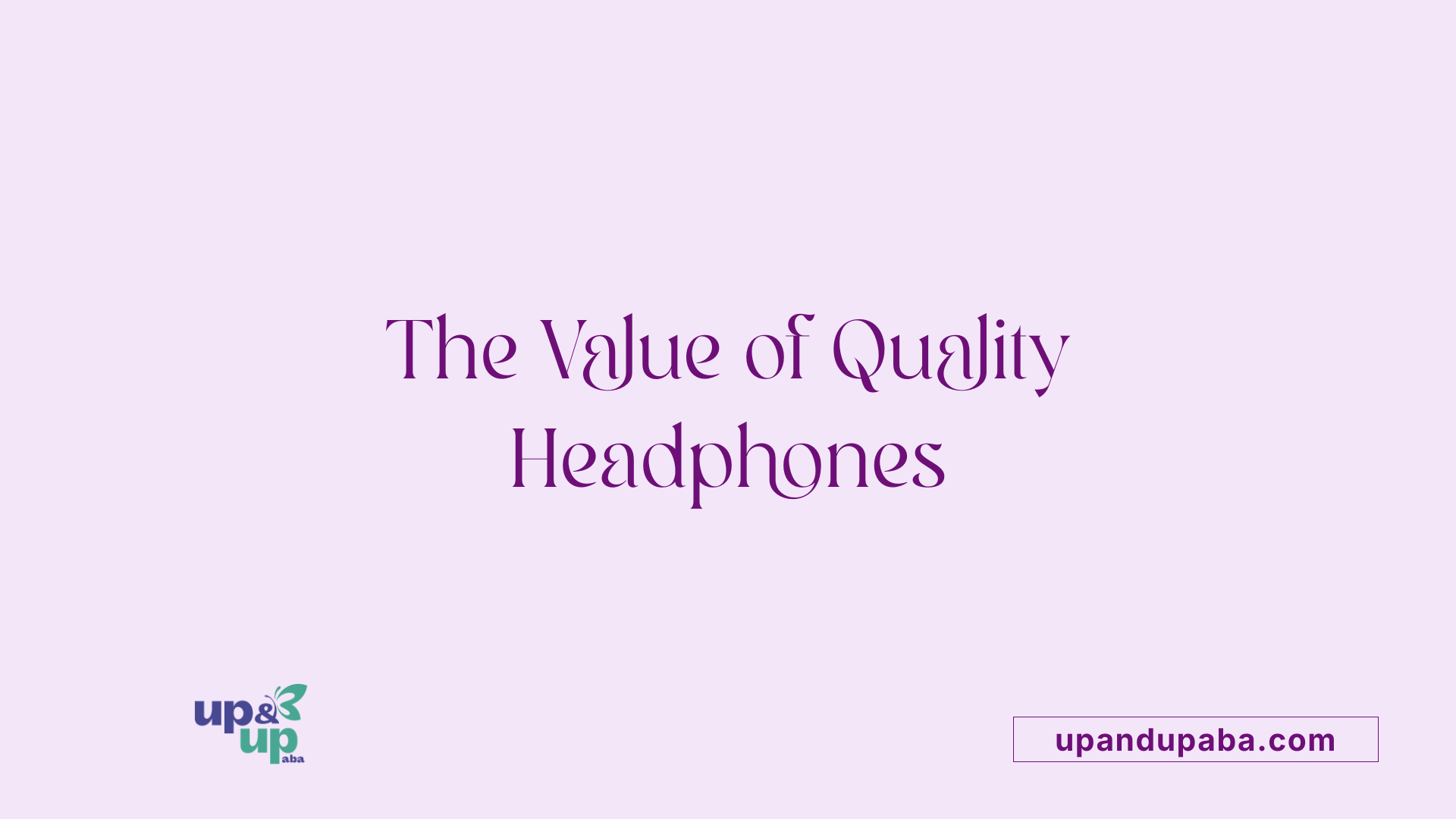
Cost vs. benefits
Investing in quality noise-canceling headphones can bring substantial benefits for children with autism. For many parents, the decision often comes down to weighing the initial cost against the potential rewards. While cheaper options may seem appealing, they often fall short in comfort and effectiveness. A parent recounts how opting for a more reliable brand like the Sony WH1000-XM3 dramatically improved her daughter’s ease in noisy environments. The payoff was clear: enhanced comfort directly translates to reduced stress and sensory overload.
Long-term advantages
The advantages of high-quality headphones extend beyond immediate relief. Research indicates that many children with autism experience enhanced focus and better sleep patterns when using noise-canceling technology. Long-term use of effective headphones may lead to improved social interactions and overall quality of life by facilitating environments that minimize auditory distractions.
Ultimately, choosing the right headphones, especially active noise-canceling options, can be a worthwhile investment. When evaluating available models, consider factors such as durability, comfort, and specific sensory needs of the child.
Comparison of Top Models
| Model | Type | Features |
|---|---|---|
| Sony WH1000-XM3 | Over-ear, Active Noise Canceling | Excellent sound quality, comfort for prolonged use |
| Bose QuietComfort 35 II | Over-ear, Active Noise Canceling | Renowned for comfort, good noise isolation |
| Earplugs (discreet) | Passive Noise Isolation | Portable, less obtrusive, but less effective in high noise |
In conclusion, spending on high-quality headphones can be vital for ensuring a better sensory experience for children on the autism spectrum.
User Insights: Sharing Experiences and Recommendations
Diverse opinions
When it comes to choosing noise-canceling headphones for children with autism, user experiences vary widely. For instance, some parents have found success with particular brands renowned for their effectiveness. The Sony WH1000XM3 and the Bose QuietComfort 35 II are frequently mentioned for their superior sound quality and comfort, which cater well to sensory-sensitive users.
However, not every product works for every child. Parents share insights on forums reflecting this individuality. Some children may prefer over-ear designs that offer full coverage and comfort, while others might opt for in-ear solutions like earplugs for a more discreet option. This anecdotal evidence highlights the importance of trying different types and brands to find the best fit.
Customizing headphone use
Adapting to headphone use can also differ based on a child's preferences and sensory needs. Parents often recommend involving children in the selection process to gauge comfort and sound experience. One mother noted switching to higher-quality headphones after realizing cheaper options didn't provide the necessary comfort for her daughter, resulting in a significant improvement in her calmness amid noise.
Furthermore, engaging older children or autistic adults in discussions about their preferred styles can be incredibly beneficial. Their experiences can guide parents towards making better-informed choices tailored to their child's unique auditory sensitivities.
Ultimately, utilizing forums and shared insights allows families to navigate the diverse options available, ensuring they find a solution that enhances their child's well-being in noisy environments.
| Headphone Type | Features | User Preference |
|---|---|---|
| Over-Ear | Strong noise-canceling, comfort | Many users favor this for extended wear |
| In-Ear/Earplugs | Discreet, portable | Preferred by several for lower-profile use |
| Active Noise Canceling | Opposes noise with sound waves | Highly rated for busy areas |
| Passive Noise Isolation | Blocks sound physically | Useful in quieter settings |
| Recommended Models | Sony WH1000XM3, Bose QuietComfort 35 II | Both noted for sound quality and comfort |
Sharing experiences ultimately helps in understanding the best way to utilize noise-canceling headphones for comfort and sensory relief.
Final Thoughts on Choosing Headphones for Autism
When selecting headphones for autistic individuals, it's crucial to consider both the technology's capability to mitigate sensory overload and the personal comfort it provides to the user. By evaluating the options available, taking into account durability, sound quality, and user-friendliness, caregivers can make informed decisions that align with the sensory needs of the individual. This thoughtful approach not only enhances daily life but also empowers autistic individuals with greater control over their auditory experiences, ultimately supporting their emotional and social well-being.


